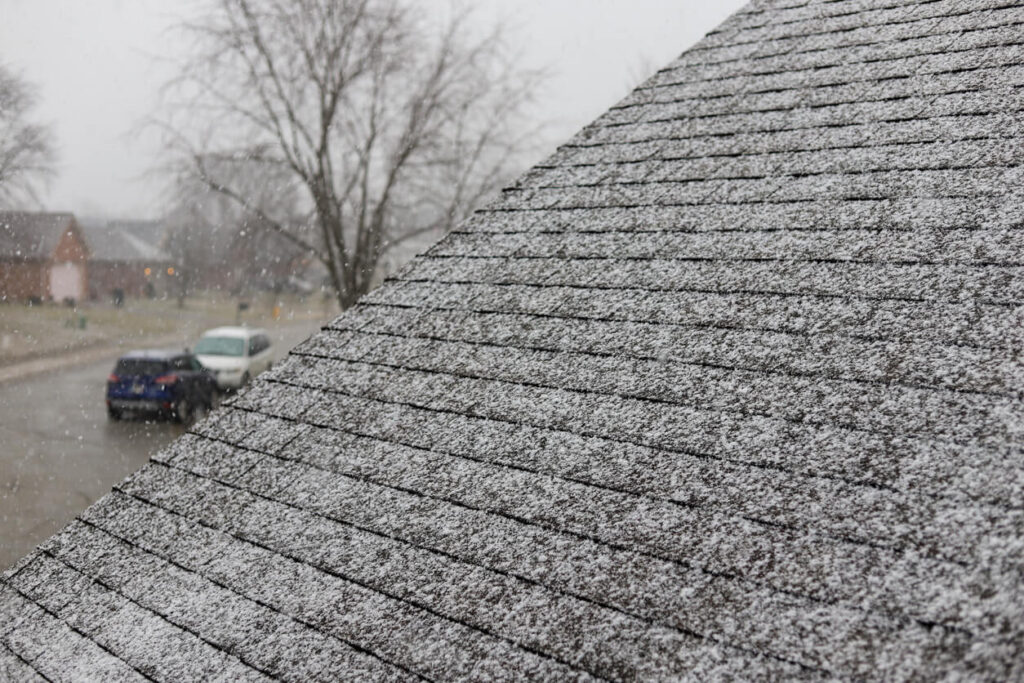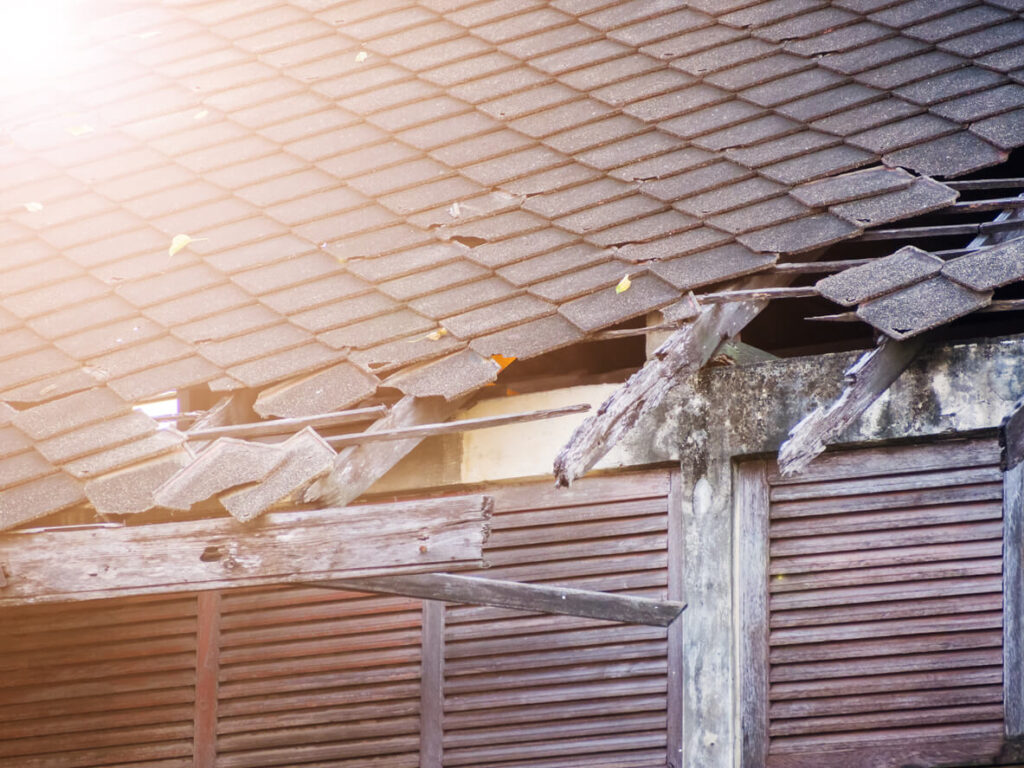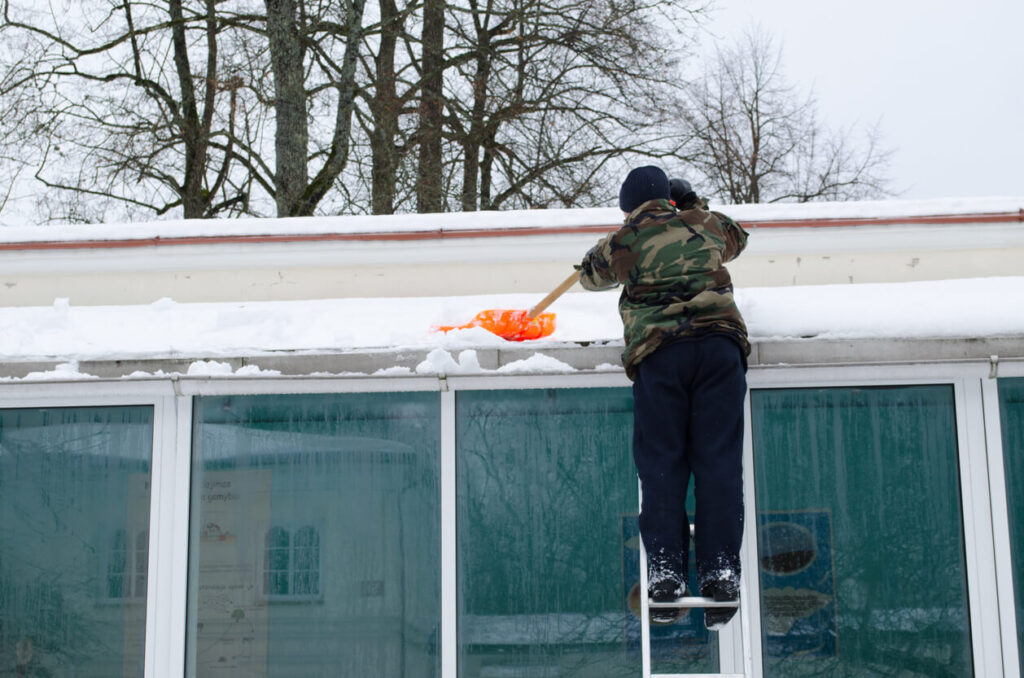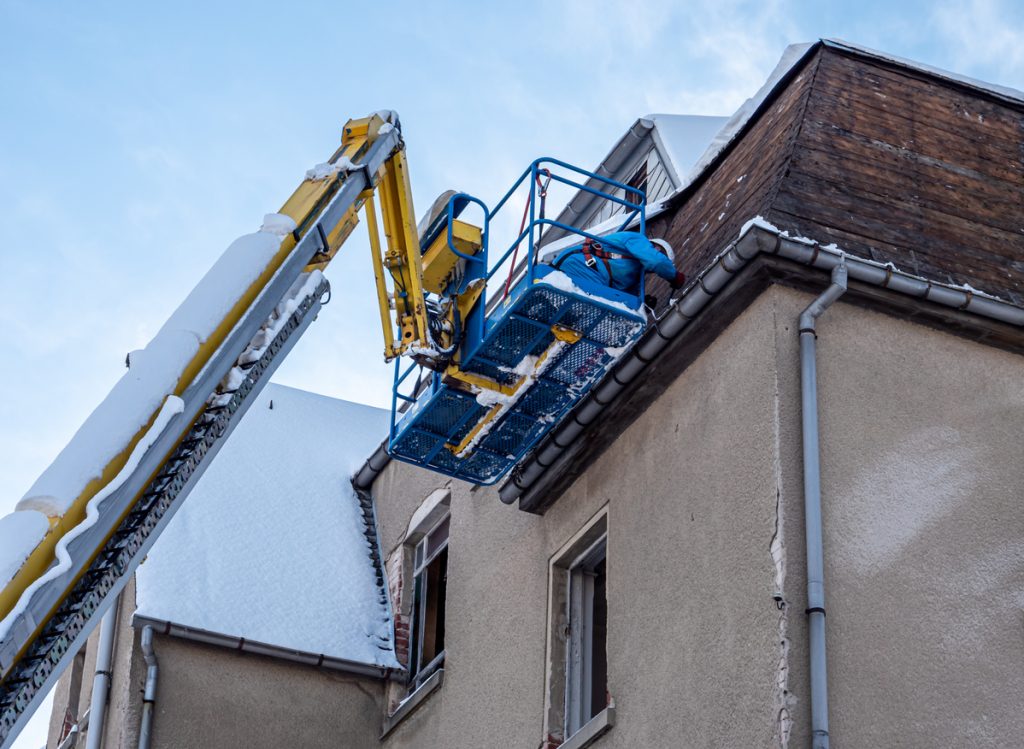Summary:
- Winter roof replacement is possible with the right skills and precautions. Professional roofers know how to safely work in these conditions, but materials can become brittle in very cold temperatures.
- Installing shingles in cold temperatures may require extra steps, like using roof cement for secure adhesion. Cold can also cause new shingles to crack or prevent sealants from curing correctly.
- Winter roofing requires special precautions—clearing snow or ice is just the beginning. Wearing proper safety gear and managing cold-sensitive equipment like nail guns can help roofers avoid jams and misaligned nails.
- If a replacement can wait, focus on preventive maintenance, like clearing gutters, trimming branches, and improving attic ventilation to prevent ice dams and leaks. Having Roof Maxx applied in the spring, summer, or fall can help ward off problems, too.
Harsh winter weather tends to expose the flaws and hazards of an aging roof. If you decide to replace your roof, you may be wondering, “Can a new roof be put on in the winter?”
Yes, skilled roofers know how to replace roofs even in cold weather. But, if you’re going to attempt a DIY replacement, here’s what you should think about first.
What Temperature Is Too Cold for Roofing?

Asphalt shingles are best installed in temperatures between 40 and 85 degrees Fahrenheit. However, if you plan on installing a new roof on your own during the winter, you’ll likely have to brave bitter wind chills and freezing outdoor temperatures.
Even premium quality shingles become brittle and readily snap or split in the cold. One solution is to keep the supplies in a warm place, such as the garage, until they are needed.
Most shingles feature a thermally activated sealant that only adheres to the surface when directly exposed to heat. Because they may not adhere securely until it becomes warmer, seal them by hand using asphalt roof cement or adhesives.
Is It Safe to Replace a Roof in Winter?
Aside from determining whether a roof can be installed in winter, homeowners want to know if it’s safe for them to do so. It is possible with careful preparation and extra precautions taken before beginning work.
Your safety will depend on how well you can assess present situations. If the weather is extremely cold, rainy, or slippery, you may need to postpone your tasks for another day to avoid accidents.
What Precautions Should I Take When Roofing in the Winter?

Roofing in winter brings many challenges because of unfavorable weather conditions. Mind the tips below when working on the roof on a cold day.
1. Wear Safety Gear
If you have snow, ice, or frost on your roof, you should wear winter-rated work boots to avoid slipping and falling. To ensure your safety while working, be sure to use a harness or other kind of fall protection equipment.
2. Clear Out the Snow
It’s difficult to see what’s beneath a coating of snow, and you may trip and fall through a skylight or a broken portion of your roof while working. Remove any snow and ice that has formed on your roof before you begin so you have a clear view of your work area.
3. Avoid Overexerting Your Body
Working in cold weather can take its toll on your body—straining your lungs and heart and exposing you to frostbite and hypothermia. It becomes especially dangerous with high winds and heavy snowfall. Besides bundling up, aim to work only when the sun is out or for shorter hours and take frequent breaks to keep warm.
What Equipment Should I Use?
Apart from fall protection equipment, you can still use the same tools and materials in the winter as you would during warmer weather. However, expect to run into a few issues.
Nail guns often jam because of cold weather. Leftover moisture in the lines can freeze at sub-zero temperatures, reducing the amount of air that pushes the nails in. Since it increases the risk of incorrectly driven nails, keep a close eye on a nail’s placement and depth before driving it at a straight, flush angle.
How Do I Maintain My Roof in Winter?

Getting a new roof in the winter is possible, but it may be better to wait until spring to do the job when the weather is favorable. Until then, be sure your present roofing can withstand tough winter weather. Follow these maintenance suggestions.
1. Do Preventive Repairs
Loose, missing, and broken shingles make your home vulnerable to leaks and water damage. The same goes for damaged flashing around the chimney, roof valleys, and overhang. If left unchecked, moisture from melted snow may seep through these gaps and wreak havoc on your interiors.
Resolve these issues to keep your roof leak-free. Examine the caulking and sealant as well; if they break or contract, the roof is no longer watertight.
2. Clear the Gutters
Debris accumulation obstructs the drainage of water runoff from your roof. During winter, the debris can also cause water to pool and freeze inside the gutter, forming ice dams. Your gutter could collapse under the extra weight, requiring costly repairs.
3. Trim Nearby Trees
Make your roof winter-ready by removing overgrowth, overhanging branches, and nearby trees. Severe storms, high winds, and snowfall during the season can weigh down heavy objects like dried branches and dead trees and cause them to fall on your roof and damage it.
4. Remove Snow Immediately
Getting a new roof in winter may be necessary if your roof sags. When temperatures drop, ice and snow will compound the structural issue. Even if your roof appears robust, the added weight can still compromise its structural integrity.
Clear heavy snow, ice, and debris from the roof with a rake. Do it from the ground instead of climbing the ladder as a safety precaution. Better yet, have a professional handle this task.
5. Check Attic Ventilation
Instead of getting a new roof in the winter, why not improve your attic’s ventilation first to help prevent ice dams? Warm air from your home that doesn’t escape your attic melts roof snow. The discharge re-freezes in cold spots. The cycle repeats until ice dams form.
Inspect the vents for obstructions or add more to ensure adequate airflow and exchange in your attic.
Allow Your Roof to Survive Winter
Replacing your roof in winter is doable, but if you can put it off until the weather is fine, that’s much better. Moreover, there’s a safer, more cost-effective alternative to roof replacement.
Roof Maxx is a roof rejuvenation treatment that can add five years to your roof’s lifespan in a single application. Its plant-based oil restores an asphalt shingle’s waterproofing, addressing your protection needs in snow or rain.
Learn more about how Roof Maxx can make roofs last and see why homeowners choose to get the treatment.





